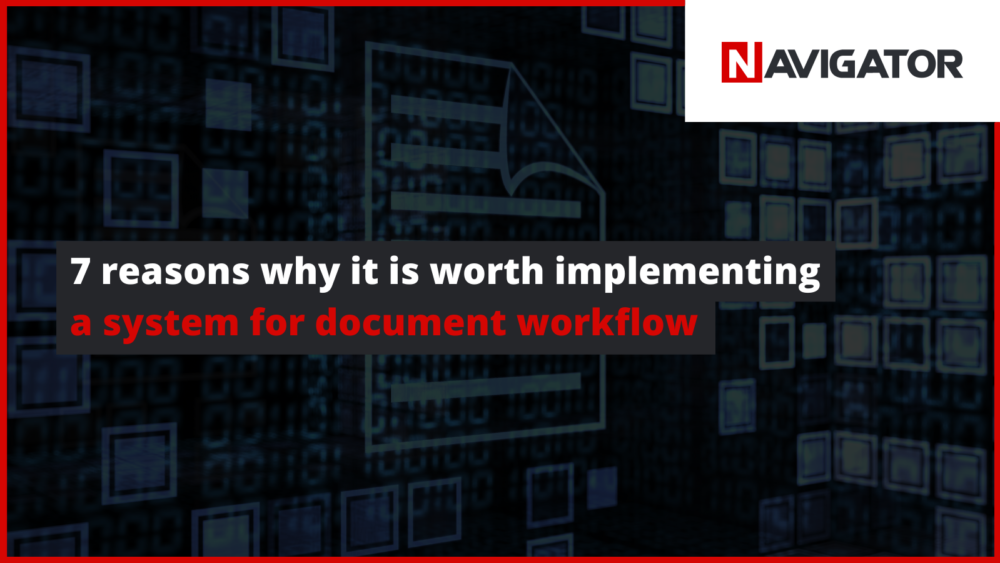It is estimated that the ECM segment will grow in the years 2015-2019 at a rate of about 14% per annum, which makes it one of the most evolving fields of management support systems. This segment includes applications for archiving, optical recognition (OCR) and workflow of various types of documents.
What makes the ECM systems so popular? I will try to systematize the most important arguments:
1. Standardization and organization of processes
Workflow is not just acceptance and notification steps. Real workflow is a complete flow process for a given document, including decision loops, different workflow paths depending on the document’s properties (e.g. type, amount), space in the organizational structure, etc. Therefore, the project forces systematization and description of processes.
2. Decentralization of management
In a traditional (paper) system, there is a tendency to accept a large number of documents in high-level positions (e.g. chief financial officer). This is because of the fear that the documents will otherwise escape the attention of decision-makers. In the ECM systems, each authorized person can follow how the documents move on (at most, be informed of them) without the need to accept them. You can also precisely give the responsibility (e.g. documents above a given amount go to the additional approval of the management board, etc.), which ultimately comes down to the fact that fewer documents “visit” desks belonging to the senior management staff.
3. Time saving
In a traditional system, we will not send invoices for acceptance to two people at the same time. In a workflow system, such “accelerators” as well as redirections to deputies during holidays, systemic prompts, automatic performance of certain activities, etc. become a rule.
4. Space saving
The ECM system digitizes everything. A fast scanner with a duplexer can transfer the contents of several binders during one working day. What happens to these binders? They are taken to the archive (or to be burnt). What happens to the cabinet? Instead of it, you can put a nice plant which will take up less space and make us feel relaxed.
5. Better exchange of information
This is a basic advantage of the implementation, it is hard to measure it. It will be understood by anyone who has ever needed a document and did not know where it was or the person who could have shared it was busy (or worse – on vacation). The ECM is a mine of knowledge. It is something like the company’s Wikipedia. You can find everything there, provided that the archive is friendly organized.
6. Better control
Can you overlook certain rules in the traditional system? For example, the purchase invoices from foreign contractors for over 10.000 euro which should be accepted by the logistics director? Easily! In the workflow system, this is not possible. A process once defined always requires you to follow the rules recorded in it.
7. Higher security standards
Companies are often afraid of sharing documents in the ECM system, because it becomes too “rich in valuable and confidential information”. The advantage of the ECM system over a binder or shared disc is that it knows that it is a high-risk system. Most ECM systems are equipped with several levels of access control. More and more often, heuristic (derived from artificial intelligence) security algorithms, similar to those used in payment cards, are applied as well.
Author: Marcin Kowalski
Has been working with the implementation of IT systems supporting management for 15 years. He specializes in Business and Workflow solutions. Enthusiast of using AI to support business processes. Archman’s CEO and chancellor of College of Economics And Computer Science in Cracow.





